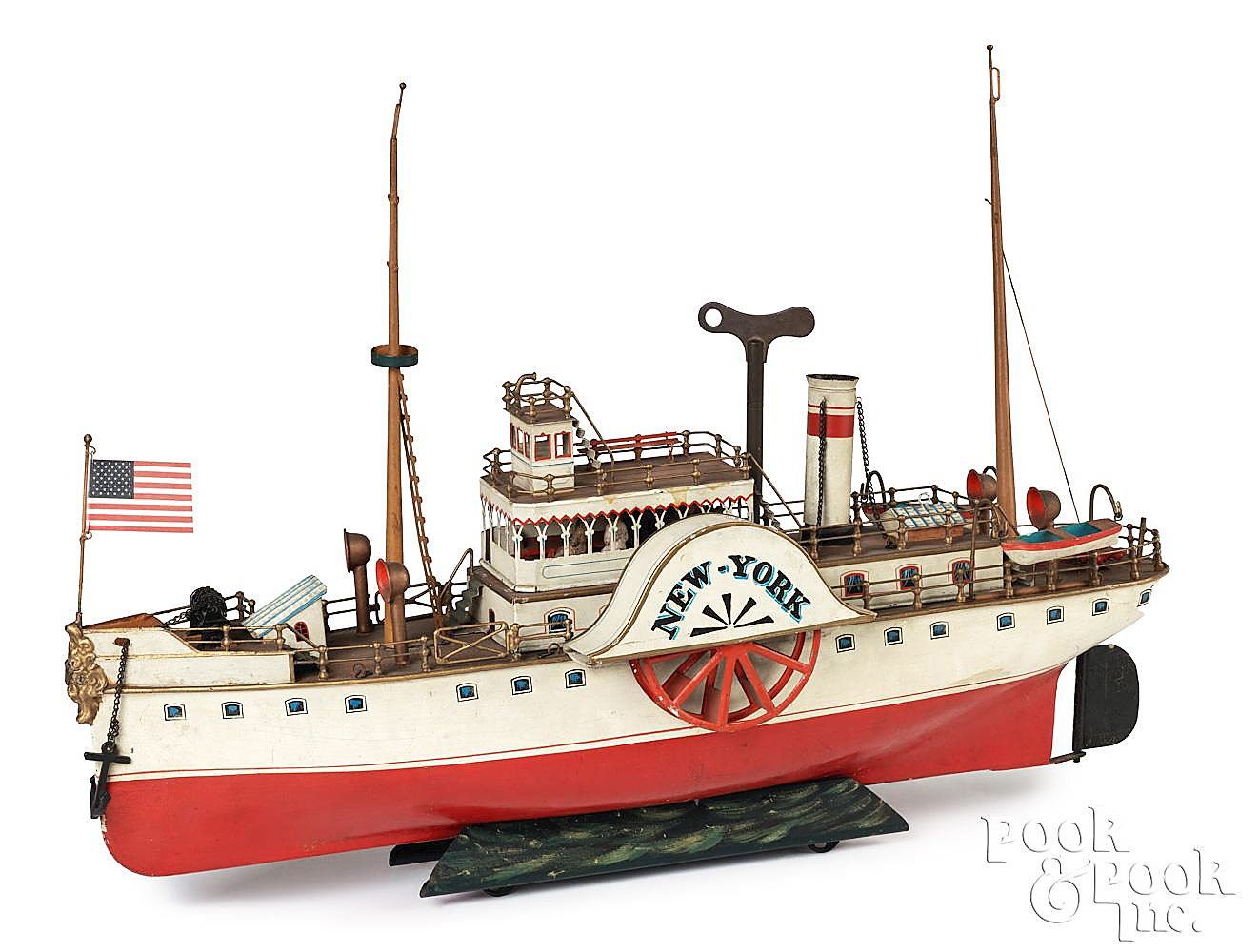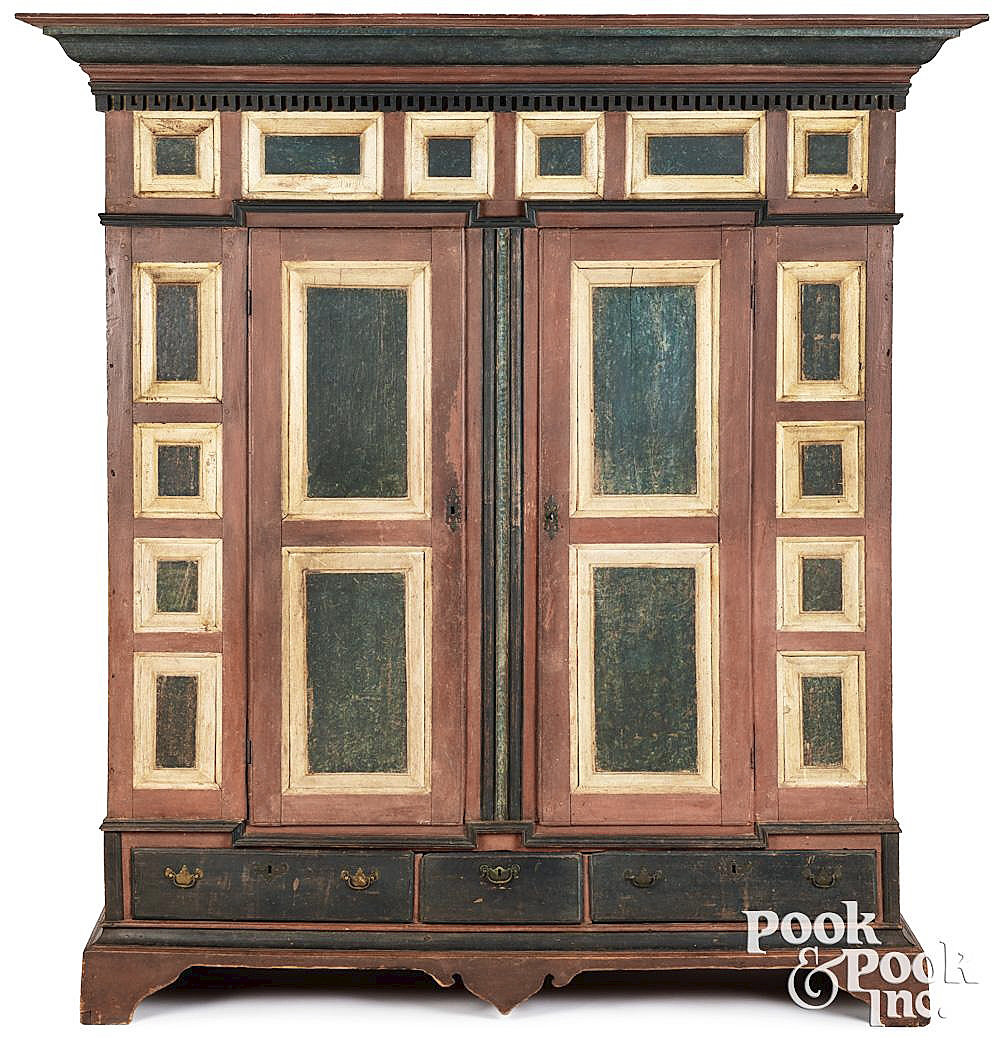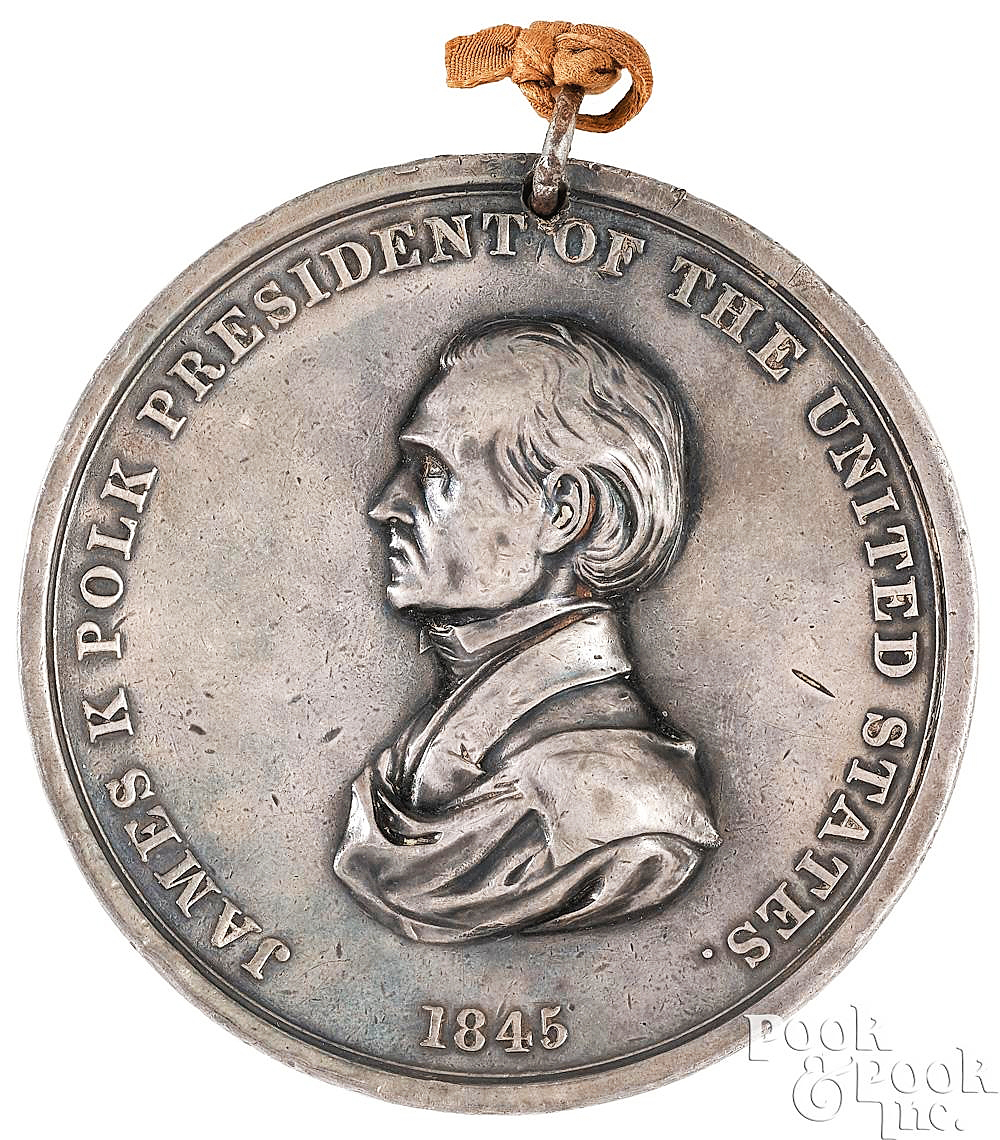
The first-rate vessel of the two-session sale was this clockwork paddle river boat by German maker Marklin, which coasted to $252,000 ($30/50,000).
Review by Z.G. Burnett, Images Courtesy Pook & Pook
DOWNINGTOWN, PENN. — Pook & Pook conducted its Americana & International auction in two sessions on May 4 – 5, offering more than 500 lots of furniture, fine art, pewter, medals and more. The auction resulted in $1,991,038, more than $400,000 over the high estimate, with a 97 percent sell-through rate. Each of the top lots was an exceptional example of its category and all sold at or above their estimates, contributing to the successful aggregate result. Although the sale included some international lots, the top sellers were all American made.
The top lot by far was akin to “The Little Engine That Could,” a Marklin clockwork New-York paddle wheel river boat that multiplied its $30/50,000 estimate to $252,000. Created during the early Twentieth Century, the paddle boat had a “well-appointed tiered superstructure with faux wood decking throughout, encased by a post and wire rail, the interior cabin with seated composition figures, two masts, and a red and blue striped smoke stack, the bow with a stamped brass grotesque mask figurehead under an American flag, iron anchor with delicate chain and hand crank winch, the upper windows with painted curtains, life boats hanging from cranes on opposing sides, the sidewheel housing inscribed New York and stamped ‘made in Germany’ on the inside wall, all supported by a painted wave cradle with small iron wheels.” The paddleboat had a few repairs and some damage, but was in working, “overall excellent” condition. It was consigned to Pook & Pook from an educational institution in New Jersey.
Furniture was the auction’s leading category, with a vibrantly painted Pennsylvania German schrank at the fore. The poplar cupboard was made in the Eighteenth Century, probably in Berks or Montgomery County. Described as “one of very few robust examples of early Eighteenth Century furniture of German design,” the catalog pointed out its architectural details such as an elaborate cornice and multiple raised panel construction. The schrank’s provenance included the Judson family of Haverford, Penn., Christie’s and Philip Bradley Antiques; it closed at $81,250. Following this was a pine drysink with scalloped sides and original red paint at $45,000. With an even longer provenance than the schrank, the drysink was illustrated in Paint, Pattern, and People: Furniture of Southeastern Pennsylvania, 1725-1850 by Wendy Cooper and Lisa Minardi (2011). Slightly later was a Nineteenth Century painted two-part corner cupboard with original decoration but with some hardware replacements that sold for $25,000. All of these came from the collection of Jeffrey Goorin and Susan Fetterolf.

This “exceptional” Pennsylvania German schrank showed vivid red, yellow and stippled green paint of the period, and was second in the overall sale at $81,250 ($50/70,000).
More Eighteenth Century Pennsylvania furniture was to join the upper ranks in the second session. First among these, and the second session in total, was a Chippendale tall case clock from Manheim, made by Christian Eby (active 1793-1803). The clock had eight-day works and showed desirable decorative elements such as flame finials and rosettes, a tympanum sunflower flanked by swags and vines, a scalloped panel base and fluted quarter columns on the case. It was bid to $22,500. An earlier Chippendale mahogany tea table from Philadelphia also did well at $15,120. The table’s decorative birdcage support and ball and claw feet are attributed to Martin Jugiez (active 1762-1815), a prolific carver about whom not much has yet been written. The only out-of-state piece of furniture to reach the top lots was a William and Mary dressing table from Massachusetts that achieved $11,970; its publication history was double the length of its provenance.
Only two folk art paintings rose to top billing during the auction, both were from the Nineteenth Century and being sold from the Fenimore Art Museum to benefit the institution’s acquisition fund. First was a New England harbor scene showing two fully crewed frigates with a lighthouse and town onshore, which sold for $35,280 ($5/8,000). Next in price and in the catalog, was a Massachusetts oil on canvas folk art landscape titled “Sycamore Tree at the Moses Rice Farm, Charlemont,” which achieved $32,760. Moses Rice (1694-1755) was the first settler of Charlemont, Mass., and this plantation was built on 2,200 acres of land that was then occupied by the indigenous Algonquians. The Rice family was driven from the site by a raiding party during which Rice was mortally wounded; the bullet found interred with his remains in the graveyard behind the homestead site has been preserved by Historic Deerfield.
Pewter from the Donald and Patricia Herr collection continued to be popular with bidders. Formerly of the Mallory collection, a circa 1770 Philadelphia footed teapot bearing the touch of William Will (1742-1798) more than tripled its high estimate to $27,500. The teapot was in good condition and showed no damage or repairs. Next in this category was an earlier New York tankard attributed to John Will (1696-1774), from whom few tankards are known. Before the Herrs, this belonged to Thomas Remensnyder, and it more than quadrupled its high estimate to $25,200.

Rare 1845 James K. Polk Indian Peace medal, Julian IP-24, was the highest selling medal at $21,420 ($8/12,000).
Twelve lots of medals were included in the sale, and two ranked second and third in the auction’s second session. These were Indian Peace Medals, diplomatic gifts usually made of silver or brass that were given at every formal interaction between the US government and Indigenous American representatives. Medals showing a profile bust of the current president were first issued in 1801 by Thomas Jefferson. At $21,420 was a large silver James K. Polk Indian Peace medal cast in 1845, of which only 11 examples are known. Next at $20,160 was an 1817 James Monroe Indian Peace medal of the first size. It is reported “by tradition” that this medal was given to High Backed Wolf (Cheyenne, d 1853). Both medals were from Francis Patrick Garvan (1875-1937), longtime president of the Chemical Foundation, Inc., and were consigned by his descendants.
Prices quoted with buyer’s premium as reported by the auction house. For information, www.pookandpook.com or 610-269-4040.



















